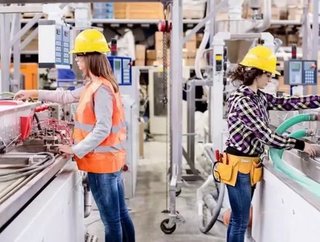Measuring gender inequality in manufacturing

Gender inequality has always been a strongly debated topic. In the past few months, however, the issue has made headline news after an unprecedented number of women around the globe took to the streets to protest about President Trump’s policies on women’s issues.
Turning to focus on the world of manufacturing, promoting gender equality has been an aim of the ethical trading industry for a number of years now. Many companies have been working with NGOs and the UN to find a sustainable way of eliminating gender discrimination and preventing sexual assault.
While most business leaders acknowledge that gender discrimination is a serious issue that needs addressing, manufacturing as an industry falls down at a few critical hurdles. Auditing and measurement fall into this category. Ultimately, retail is still far too reliant on these processes, which do little more than review, analyse and report on a brief snapshot in time.
Don’t let bad data inform your decisions
I’m a firm believer that no data is better than bad data. It is a widely acknowledged fact by those working in the ethical trading industry that gender discrimination is rife in the world of manufacturing. So, when brands end up with matrices and risk assessments that are primarily based on limited audit findings that declare there is “no evidence of gender discrimination or sexual assault in their factories”, the next logical step is to start questioning the ability of audits to reflect reality.
The real problem with audits
The idea of moving beyond audits is not a new one. Yet the situation isn’t that simple. Some research has shown that audits do in fact help improve outcomes for issues such as child labour and health and safety. It gets complicated, however, when you try to use audits to measure ‘soft issues’, like gender discrimination.
With enormous databases of information about the state of gender equality within manufacturing at our fingertips, you would expect to find at least a few instances of discrimination or violence against women. But, according to anecdotal evidence, most companies struggle to record a single substantiated case.
This comes down to a few factors. Firstly, often auditors are men, which unfortunately means there are frequently inconsistencies in what they choose to document. Then there is the fact that gender discrimination is best assessed within a cultural context. No manufacturing plant sits completely separate from the world around it; the way women are treated within a factory is significantly impacted by the attitudes of the surrounding communities. This is true regardless of whether these communities are in developing or developed countries.
Collaborate to create change
So, the big question is: how can you measure something as intangible as gender discrimination? Audits certainly don’t paint a detailed enough picture by themselves. One thing companies can do to build a better understanding of the issue is to work more closely with other brands. Using a participatory approach will mean it’s that much easier to draw comparisons between suppliers and assess the differences in working conditions or any instances of gender inequality. It also means that companies can begin to understand which practices are leading to fewer reports of discrimination, and which are making little difference to the issue.
On top of these company partnerships, collaboration needs to happen with the wider community. Often, discrimination against women isn’t a company-centric issue, but is driven by deeper issues within the local community. If a company wants to make a real difference, they should be seeking visibility of the lives and working conditions of those amongst their supply chain. By doing this, brands can develop programs that help their factory workers to address the problem in a cultural context.
Tackle the big issues
Realistically, this change won’t happen overnight. It will take real time and dedication from all stakeholders to ensure that gender equality is made a priority. But accurately measuring the problem of gender discrimination within manufacturing can no longer be neglected if we’re to truly make a difference to the lives of women across the world. Ultimately, ethical trading teams need to look further than audit findings that, in reality, should be taken with a pinch of salt.
By Laura Houghton, Segura
Follow @ManufacturingGL and @NellWalkerMG
- Crowe UK: 2024 Manufacturing Outlook Report Explores GrowthProduction & Operations
- Top 10: Chief Manufacturing OfficersProduction & Operations
- Aerospace Insight: Where does Boeing make all of its PlanesProduction & Operations
- Comau's Automation Solutions for Outside of ManufacturingAI & Automation






